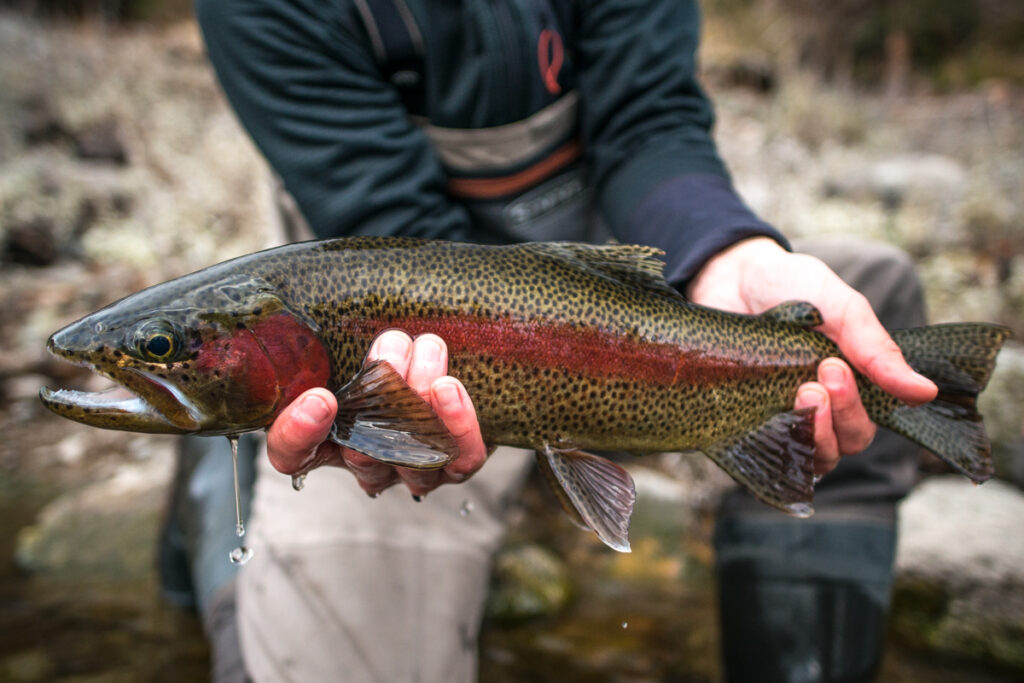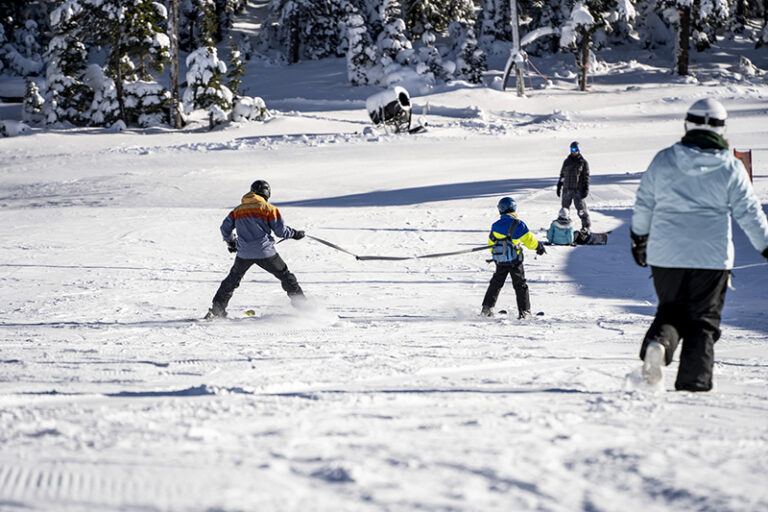Redband trout are the iconic fish of the Spokane River. Recently they have received recognitions with a statue, park naming, and a rally mascot. They are also the obsession of a handful of local fly fishers. These inland subspecies of rainbow trout are native to our Columbia River drainage as well as the Great Basin drainage.
These trout are also adaptable to a range of conditions and can be found growing up to 24 inches in the deep waters of Lake Roosevelt and 4-5 inches in smaller headwater such as those flowing into Hangman (Latah) Creek. Along the Spokane River there can be as many as 300 fish per mile, but in some Idaho rivers their numbers can be as high as 3,000 fish per mile.
It isn’t always easy to tell a redband from coastal rainbow trout varieties, especially if it is at the end of a fly line. Even fish biologists Casey Flanagan and Conor Giorgi who work for the Spokane Tribe have trouble at times. But there are some ways to tell them apart.
Flanagan says in the Spokane area, hatchery trout, which are coastal rainbow varieties, will have a clipped adipose fin (a small fin along the back). Redband can also have some distinctive coloration including the namesake red lateral band as well as large rounded spots. Flanagan and Giorgi say those marks become more distinctive in populations that live in smaller streams. But when Flanagan wants to be absolutely sure she uses genetic markers.

Redband Face a Variety of Challenges
Although redband live in a variety of river habitats, their population numbers can be limited by degraded streamside habitat, increases in water temperature, as well as competition and predation from non-native fish.
The Spokane River by Sandifur Bridge near downtown Spokane is a year-round stronghold for redband and is an important nesting area where fish dig depressions in the gravel called reds to layer their eggs. Redbands struggle on other stretches of the Spokane such as those downstream of the Post Falls Dam where they are preyed on by the non-native popular game fish, small mouth bass.
The watershed of the Little Spokane River with its cold spring-fed waters and healthy riparian habitat has a healthy population of redband. Whereas some tributaries of Hangman Creek, on the other hand, have lower population numbers due to warm, seasonal water temperatures and frequent fine sediment erosion from surrounding agricultural land. This fine sediment covers up the larger gravel that the trout use to make their reds.
Conservation Collaboration
There are many collaborative conservation efforts in the region. The Spokane Tribe, Confederated Colville Tribes, and Washington Department of Fish & Wildlife (WDFW) collect and share similar data. Groups like the Spokane River Forum and the Spokane Riverkeeper are putting up education signage and working to protect water quality.
The EPA, Department of Ecology, tribes and WDFW are working on habitat restoration, including removing fish barriers in the Little Spokane watershed and restoring meanders and streamside habitat to the headwaters of Hangman Creek. Several county conservation districts are also encouraging landowners to opt into a voluntary stewardship program to protect their riparian habitat.
With clean water and intact, healthy habitat, redband trout can thrive in rivers and streams here in the Inland Northwest, allowing them to play their natural role in our aquatic ecosystems and anglers and nature lovers the chance so catch or see this magnificent fish.

As the weather warms up you can find Adam floating the Spokane in canoe, packraft, inner tube, or along with any friend with room on their fly-fishing raft. He last wrote about a close encounter with a woodpecker.













